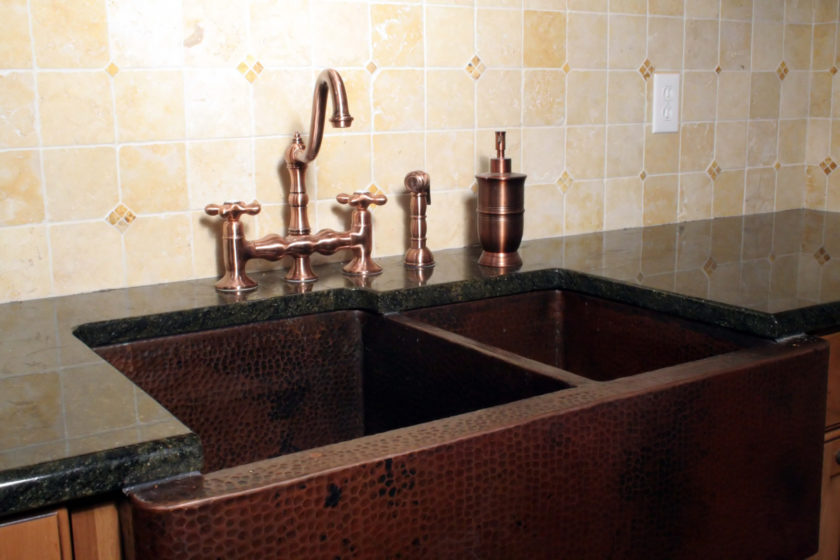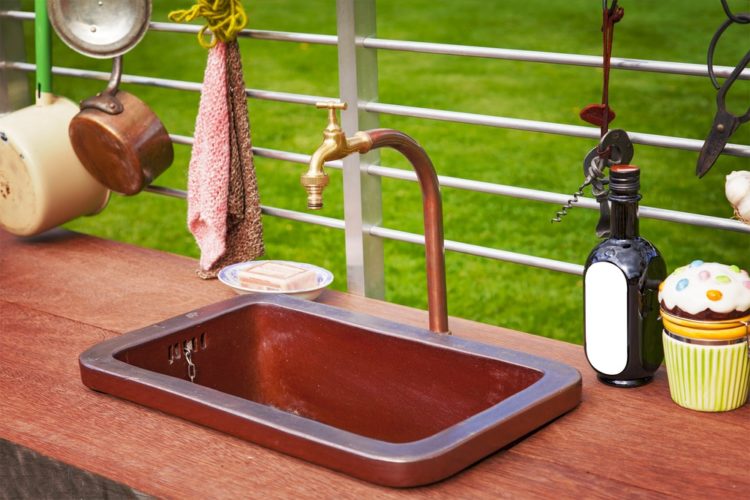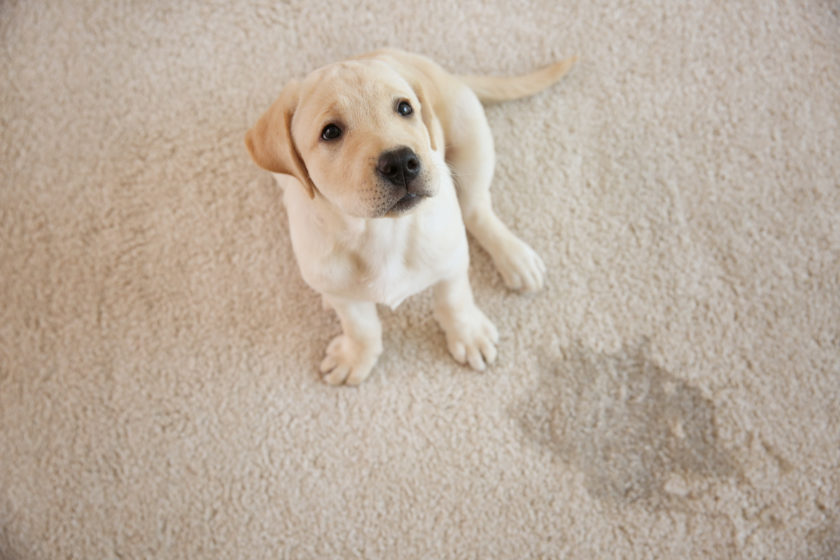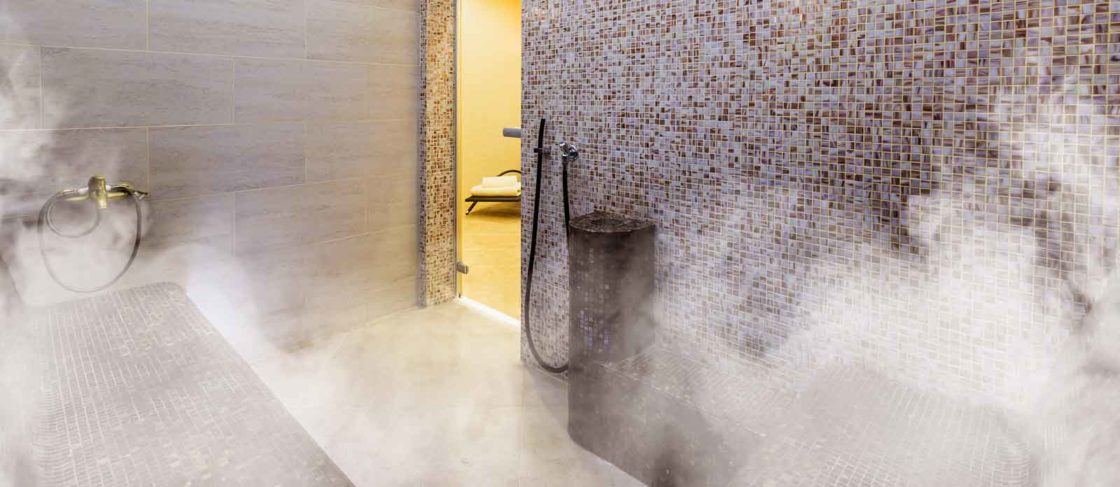Faucets and copper add a touch of elegance and color to any home and have a beautiful finish that evolves after a while. That said, it’s important to take good care of your surfaces since exposure to gunk and grime buildup or the wrong cleaning products can harm the natural patina of your sink.

To that end, understanding how to clean copper properly and develop a tried-and-tested approach that can handle the worst mineral deposits, tarnish, and water spots. With reliable options for cleaning copper sinks, they remain as shiny and bright as a new penny. Our cleaning tips will give you a rundown of the most ideal ways to get your bathroom or kitchen sink gleaming.
What You Need to Clean Your Copper Sink
You’ll need the following supplies to clean your copper sink:
- Hot or warm water
- Dishwashing soap without bleach
You’ll need the following tools, as well:
- A lint-free cotton or microfiber dishcloth
- A cleaning sponge
A Step-By-Step Process of How to Clean a Copper Sink
To get started, follow the steps below.
1. Rinse the Sink Thoroughly
After each use, rinse the bathroom or kitchen sink thoroughly to get rid of any bits of beauty or food products that might be clinging to the copper surface. It’s especially essential to rinse away anything acidic that might negatively impact the patina.
2. Wipe the Sink with Water and Dishwashing Soap
To clean your copper sink, all you need is a few drops of the liquid dishwashing soap on a dishcloth or sponge. As you wipe the sink, don’t forget the countertop rims. They might have splatters underneath that may ruin the finish.
3. Tackle Stubborn Stains
For any stains that are proving to be stubborn including stuck-on food particles, make a thick paste of water and baking soda and put it on a sponge. The paste will aid in eliminating green spots, typically known as verdigris that might appear around fixtures where copper is exposed to moisture for a long duration. Verdigris is a buildup of minerals that you can prevent by properly drying the sink and surrounding area after each use.
4. Rinse and Dry
Once your copper sink is spick and span, rinse it again with warm water and use a microfiber cloth to dry it and the fixtures.
The Don’ts When Cleaning a Copper Sink
Cleaning a copper sink is a straightforward process. It’s more crucial to learn the don’ts of the task. Avoid the following tools and supplies:
- Drain openers
- Abrasive cleaners
- Bleach and other harsh chemicals
- Steel wool
- Harsh scrubbing pads
How to Maintain a Bright Copper Finish
If you’ve chosen a bright copper finish for your sink rather than allowing the natural patina to blossom after a while, you’ll require frequent waxing and cleaning to maintain the shine. Raw copper darkens relatively fast as is the case with new copper pennies. If you’ve opted for a vibrant copper finish for your sink rather than allow the natural patina to blossom with time, you’ll need to clean and wax the sink frequently to maintain the shine.
Raw copper will start darkening relatively fast. Consider how quickly a new copper penny begins to lose its shine. Therefore, if you want a shiny copper sink, select a lacquered finish from the manufacturer. Even with proper cleaning, the lacquer will start fading away in the long run.
Upon noticing the copper discoloration or darkening, that’s your cue to use a polish designed with copper sinks in mind. When the sink regains its shine, coat it with a specialized copper wax such as Carnauba wax and buff it to the initial shine. That should be done every six weeks. Additionally, you can have a rope in a metal connoisseur to reapply lacquer onto the copper.
How Often Should You Clean a Copper Sink?

Just as other bathrooms or kitchen sinks that are used daily, a copper kitchen sink requires everyday cleaning. If you reside in an area with hard water, the minerals in it will leave unsightly spots on the sink surface. To avoid spotting, we recommend drying the sink entirely after each use. If you have a shiny lacquered copper and want to maintain the shiny look, the lacquer will eventually be worn away.
The sink will need to be polished or re-lacquered with a copper cleaner followed by waxing with carnauba wax frequently. The regularity of the need to wax is based on how frequently the sink is used.
Tips
Let’s delve into a few pointers when cleaning a copper sink.
- Avoid leaving acidic foods such as cosmetics, citrus juice, toothpaste, tomato sauce, pickles, ketchup, and citrus peels sitting on the surface of the sink for an extended period.
- Don’t leave dirty dishes or cleaning tools in your bathroom or kitchen.
- If your copper sink has a highly-polished, smooth finish, use a dishwashing mat at the bottom to prevent pans and pots from marring the surface.
- Avoid harsh cleaning supplies, polishes, and chemicals.
- Remember to apply wax every four to six weeks to maintain a bright finish.
- You can use steam to disinfect your sink.
FAQ
Here are the answers to some of the most commonly asked questions about how to clean a copper sink.
1. Does a copper sink become green?
Although green oxidation can occur as a result of salt water, hard water, and major shifts in temperature, if your copper sink is properly cared for and cleaned, it shouldn’t turn green.
2. Can you use vinegar to clean a copper sink?
For major grime or stains on your kitchen or bathroom sink, you should mix half a cup of white vinegar and water. Dip a soft cloth into the solution and scrub the stain or grime. Once your sink is in good shape, rinse off the solution and dry it to avoid damaging the finish.
3. Can you use baking soda to clean your copper sink?
For stains, mix baking soda and water to form a paste. Dab it on a sponge and scrub off the stain. The paste also gets the job done on green spots (verdigris). Once your sink is clean, rinse off the paste and then dry it.

